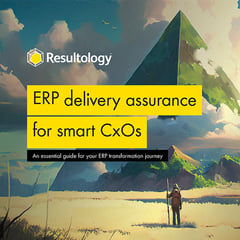If you like sport or drugs, you’ll like this.
If you don’t, you'll probably still like it.
This week I was sat in a cafe in a coastal town in California and I overheard a story.
I was marginally interested in the thrust of a discussion a few tables away as I dealt with my overnight emails but my interest piqued as the story unfolded amongst the three 50 something former surf dudes sipping their lattes.
One of the group was recounting a story to the others of a young athlete.
Aged 14, he’d broken the high school record for his field event. At that young age he was 6’3, lean and fast. A huge stride and a naturally muscular physique.
The school he went to had a state record for track and field and some of the best coaches in the region. He'd also earned a scholarship at a college in Utah who are regularly in the top 5 for his event.
These facts add up to a potential champion.
A future Olympian, surely?
I mean, would you bet £100 or $100 on him making say the 2024 Olympics?
What If I told you one more piece of information to guide your gamble….
What if I told you that he’s now 18 years old and a Crystal Meth addict?
Would that change your view of his odds of making the Olympics?
This story is an example of the model of "multiplication by zero”. It’s similar to the notion of the weakest link - but in this case, a single element of the equation totally negates the other elements.
Try some maths (or math given my current location)...
74,354 x 43,534 x 234,404 x 0
Once you see the zero in that equation, you don’t need to do the math(s) that runs up to it, unless you’re a mathematical sadist. Or an imbecile.
This model is something that I’ve been thinking about a lot recently as we’ve been doing some work with external consultants on our own business - and work as consultants on our clients businesses.
Sometimes there are a whole host of factors that multiply together to create success. Or perhaps momentum towards success.
But if any one of them is zero (or near to zero) the rest don’t matter.
It’s the simplest of mental models that you can quickly use to determine if something is really going to work. If any one of the contributory multiplication factors is zero, then the other factors are meaningless.
The guys in the coastal cafe were either telling a true story or a contorted urban myth based on the true story of Len Bias.
Ironically, the name Bias is potent here.
The model only works for multiplicative systems, not additive systems. Sports scoring systems for example are additive. 1-0, 2-0, 2-1, 3-1. There’s no factor that can negate a typical sports score.
But most businesses and business transformation projects are multiplicative systems.
They comprise a host of factors that contrive to either drive success or failure. Some of the factors are overt. Others fly totally below the radar - outside the day-to-day consciousness of the people who execute their plans. This is because plans are based on traditional work breakdown structures or phases, not Success Levers or Failure Points.
The way most enterprises plan doesn't flush out the things that matter most.
The 15 factors that drive SAP success
Recently, we did a piece of research that identified 15 factors that drive success or failure of SAP programmes (or more specifically, SAP business case investments).
What we found was quite startling.
50% of SAP programmes don’t achieve their business objectives.
That’s kind of like investing £20m or £100m or whatever your SAP business case states and then flipping a coin to see if you get the benefits in the very same business case.
And, if one of those 15 points is zero (or close to zero) then you fail.
Clearly, certain factors are more impactful than others. But there are 3 in particular that have a huge sway on the likelihood of being successful with SAP (and most other packaged IT solutions for that matter).
If you run SAP, my question for you is, have you got a Crystal Meth addiction that you don't know about?










